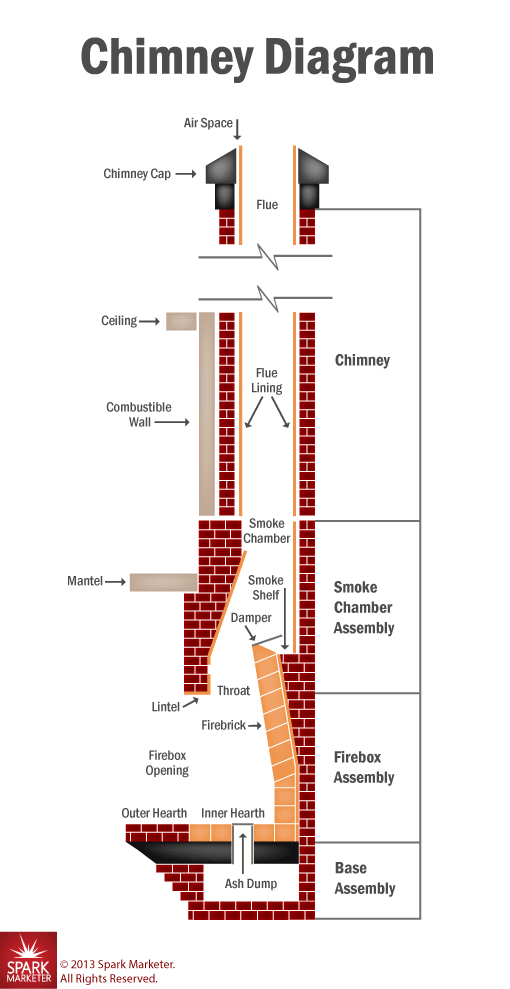Your chimney has a surprising number of parts; deciding what to do about that is more up to you than to us. We could list all its components, or we could draw a picture and lots of arrows, but in all likelihood, neither would be helpful. What we would greatly prefer to do is determine that all of them are the right size and in good condition for safe use.

Most homeowners know what their “hearth” is, even if they do not know we divide it into “inner” and “outer” parts. They know their “mantel” is where their decorative items are, and they handle ash removal without referring to “dumps” and “pits”. They may consider the “damper” part of the chimney, but most know it is up there and usually remember to open it before starting a fire.
First of all, it is important to know that the chimney – with its own complicated parts — is actually a separate system. It must, however, be compatible with the fireplace for the two to function correctly; any work on one must consider the other. That is why qualified sweeps inspect the fireplace in addition to the chimney, as the performance of the two systems is interdependent.
Secondly, in our experience, the fireplace parts most likely to be unfamiliar and at issue are the “firebox”, the “firebrick”, the “throat”, and the “lintel”. The “firebox” is the “inner hearth” and it is where you build your fire. The “firebrick” is at the back of it. The “throat” is what connects the firebox to the chimney and is where, in the case of throat dampers, the damper is located.
The “lintel” is a structural element and it is a horizontal framing piece that helps to support the chimney. Knowing the parts of your fireplace and their purposes is a good thing, but naming them is less important than maintaining them. Let your chimney sweep walk you through your fireplace the next time he comes out to inspect both systems. This is actually the best time to get more familiar with the actual names of the different parts as the sweep can point them out to you. For most of us, a visual association works much better than words on a paper.

Recent Comments